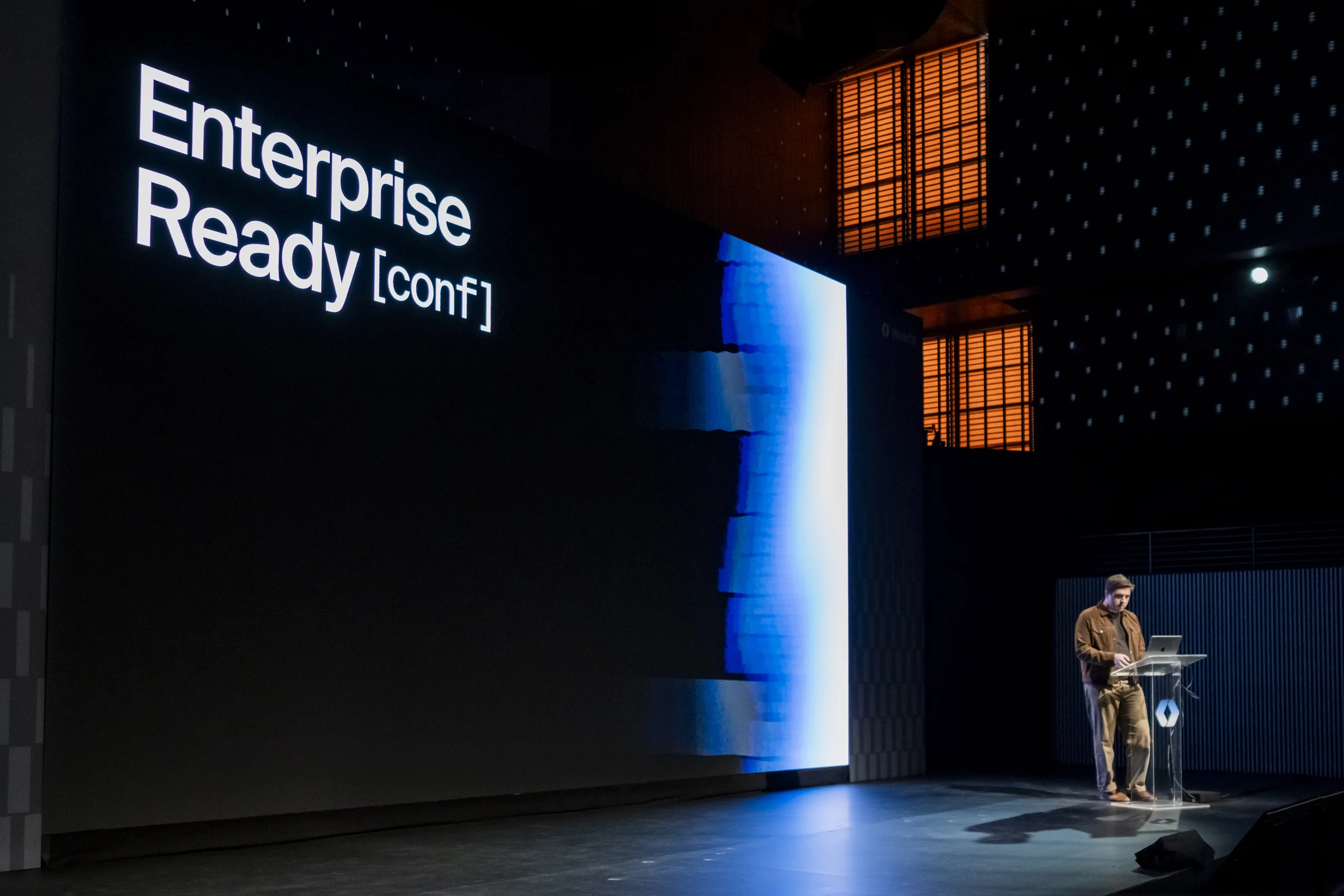Metronome's Lightning Demo: Building Enterprise-Ready Monetization in Real Time
At ERC 2025, Cosmo from Metronome demonstrated how their platform solves enterprise billing complexity through real-time contract management and flexible monetization models.
This post is part of our ERC 2025 Recap series. Read the full recap post here.
At ERC 2025, Cosmo from Metronome took the stage to demonstrate something that resonates deeply with the WorkOS mission: solving enterprise readiness problems that look simple until you actually build them.

While WorkOS focuses on authentication and identity infrastructure, Metronome tackles the monetization side—and as Cosmo explained, both companies are solving "very similar shapes of problems for two different parts of a company."
The Monetization Evolution
Cosmo opened by highlighting how dramatically billing has changed over the past two decades. Twenty years ago, he explained, you could build a multi-billion dollar business with billing being "a one person spreadsheet operation, back office, totally disconnected from product." Today's reality is far more complex: companies are expected to support not just seats and subscriptions, but hybrid consumption models, outcome-based pricing, and real-time visibility into usage that powers fraud detection, upsell workflows, and product-led growth cutoffs.

The speed of change has accelerated too. Your PLG customers can become major enterprise accounts "literally overnight as their own businesses take off," which means you need billing infrastructure that supports the full spectrum from day one—not separate systems for different customer segments.
Inside the Metronome Platform
Cosmo's demo revealed how Metronome approaches this complexity through an architecture that treats billing like an observability platform. Rather than sending "charge this customer" commands, you stream raw product events to Metronome—things like bytes stored, CPU seconds consumed, API calls made, along with metadata about which users and organizations triggered those events.

Walking through the dashboard, Cosmo showed a demo customer with a straightforward contract covering five products: API calls and several AI models. Each product is essentially a view on top of that underlying event stream—you filter by event type, add grouping keys, and sum the relevant fields. The platform calculates invoices in real time, which Cosmo noted means you can do "real time fraud detection or fraud prevention by calculating the balance in literally subseconds as you're sending usage in."
The Live Contract Negotiation
The most impressive part of the demo came when Cosmo simulated a real enterprise sales scenario. The demo customer had a $51,000 bill just for October—clearly starting to spend at enterprise levels. "So maybe this customer is starting to think about moving up market," Cosmo explained, "wanting to sign maybe a more complex deal."
He navigated to edit the contract directly in Metronome, demonstrating the platform's flexibility for handling complex enterprise commitments. He added a post-paid commit where the customer commits to spending $100,000 by end of year. In exchange for that commitment, he configured a 50% discount across all products—but here's where it gets interesting: he scheduled that discount to start on October 15th, not retroactively.
"All aspects of Metronome are very atomic and also schedulable," Cosmo explained. "You can have a lot of flexibility of when things go live."
After saving the contract, the changes reflected immediately in the invoice. The bill was now cheaper, showing two different unit prices for most usage items—one rate for the first part of October, another for everything from the 15th onward. A draft invoice appeared showing the remaining commitment balance that would be invoiced at year end.
The Complexity Beneath the Surface
Cosmo acknowledged this was "a very simple demo" compared to what Metronome actually supports. "The real value of the Metronome platform is all those other flags in that contract screen," he said, gesturing to the interface. "It's really hard to demo that live in five minutes."
That's the honest assessment of someone who understands infrastructure complexity. What looked straightforward on stage—editing a contract, adding commitments, scheduling discounts—represents the kind of flexibility that enterprise sales teams need but that's incredibly difficult to build and maintain in-house.
The Parallel with WorkOS
The connection to WorkOS's mission became clearer as Cosmo wrapped up. Both platforms solve problems that companies inevitably face as they move upmarket. Just as you can't avoid enterprise authentication requirements, you can't avoid billing complexity. "If you are struggling with monetization or you think that you will—which you will if you're moving up market—you should come swing by our booth," Cosmo concluded.
The Stripe integration that WorkOS announced during the morning keynote represents where companies typically start with billing. Metronome, as the Michael Grinich noted, "is often where companies end" when they need to support the full complexity of enterprise deals: tiered commits, credit pools, scheduled pricing changes, and seamless transitions from PLG to enterprise pricing models.
Building Once, Supporting Everything
What makes Metronome particularly compelling is the same principle that drives WorkOS: build against one platform that can grow with your business. You don't need separate billing systems for your PLG tier and your enterprise customers. You don't need to rebuild your integration every time your pricing model evolves. Stream your events once, configure whatever monetization you need, and let the platform handle the complexity.
It's infrastructure you don't want to build yourself—and as Cosmo demonstrated in five minutes on stage, there's far more complexity beneath the surface than most teams realize until they're deep in the weeds of their first enterprise billing negotiation.